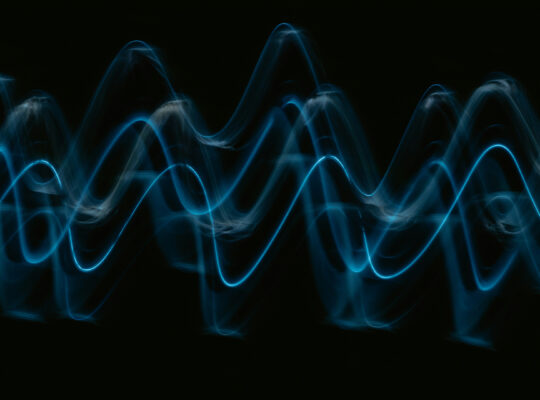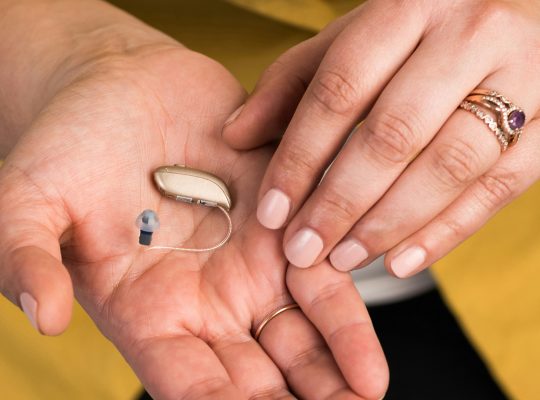You hear the term a lot: decibels. At concerts, on airplanes, when it comes to hearing protection, or when you buy a vacuum cleaner. But what exactly does it mean? What is a decibel, where does it come from and why is it so important when we talk about hearing and sound?
In this blog, we dive into the world of decibels in an accessible way. Not a dry science lesson, but useful explanations that will help you better understand sound and hearing protection.
Sound: vibration in the air
To understand what a decibel is, we must first take a look at sound itself. Sound is really nothing more than vibrations moving through air (or some other medium). Your ear captures those vibrations; your brain converts it into “sound.
Some vibrations are soft, others are rock hard. Think of the difference between the rustling of leaves and the roar of a fighter jet. We express how loud or soft a sound is in decibels (dB).
Okay, but then what ís a decibel?
A decibel is a unit that represents the strength of a sound. But it is not an ordinary scale as you may be used to. It is a logarithmic scale. That sounds complicated, but it simply means: for every 10 decibels more, the sound becomes 10 times more intense.
So:
- 30 dB is not “a little louder” than 20 dB, but 10 times more intense
- 40 dB is 100 times more intense than 20 dB
It sounds illogical, but that’s because our hearing itself works logarithmically. We perceive a doubling of volume not as “twice as loud,” but as “a little louder.” So the decibel scale is adjusted accordingly.
What do those numbers mean in practice?
Just some examples to make it concrete:
- 10 dB: breathing
- 20 dB: whispering
- 30 dB: soft rustling
- 40 dB: quiet library
- 60 dB: normal conversation
- 85 dB: heavy traffic
- 100 dB: rock concert (without earplugs!)
- 120 dB: short-range siren
- 140 dB: fighter jet at 30 meters distance
From 85 decibels, the risk of hearing damage becomes real if you are exposed to it for long periods of time. Therefore, that is also the limit at which hearing protection becomes mandatory in the workplace.
Also, why do you sometimes hear “A” after dB?
You sometimes see “dB(A)” listed. That’s a modified unit of measurement where sound is weighted based on how the human ear perceives it. We don’t hear all frequencies equally well. The dB(A) scale filters out frequencies to which our ear is less sensitive, so you get a more realistic picture of what a person really experiences in terms of sound intensity.
In most situations involving hearing, dB(A) is used. For example, when measuring traffic noise, machinery or festival volume.
What’s the problem with too many decibels?
Our ears are sensitive. And while they can take quite a bit, prolonged exposure to loud sounds is really harmful. Anything over 85 dB can cause hearing damage over time. And the louder the sound, the shorter the time it takes for damage to occur:
- At 85 dB you can listen for about 8 hours without damage
- At 100 dB, that’s only 15 minutes
- At 110 dB you are at risk after just a few minutes
And this is still without taking individual sensitivity into account. Some people get symptoms even with shorter exposures or at lower volumes.
What kind of hearing damage can you get?
The most common forms are:
- Tinnitus (a constant beep, hiss or hum in your ear)
- Hyperacusis (hypersensitivity to sound)
- Perceptive hearing loss (permanent damage to the hair cells in your inner ear)
This damage is usually irreversible. What is broken does not get better. That’s why prevention – such as hearing protection – is so important.
How do you measure decibels?
There are handy apps that allow you to measure approximately how loud sound is in your environment, but a professional measurement is done with a decibel meter. This accurately measures how much noise is in a certain place. That can come in handy in workplaces, concert halls, classrooms or even nurseries.
Manufacturers of appliances are also increasingly indicating how much dB something produces. Think of vacuum cleaners, dishwashers or air conditioners.
Hearing protection: what really helps?
If you want to protect your hearing, it’s smart to know how well something muffles. Hearing protection often has an SNR value on it: this is the average attenuation in dB that the product offers. Say you’re at a festival with 100 dB, and you’re wearing earplugs with an SNR of 25 dB. That still leaves 75 dB coming in at your eardrum – a lot safer.
For everyday use, you can choose from:
- Universal Earplugs: ideal for festivals, concerts, travel
- Customized earplugs: for musicians, DJs, employees in noisy professions
- Over-ear hearing protection: like ear muffs, for children or at very high volumes
Note that earplugs must sit properly in your ear to provide attenuation. Poorly placed earplugs barely dampen.
What can you do to save your ears?
Here are some practical tips:
- Always take earplugs to festivals, concerts or clubs
- Do not stand close to the speakers
- Give your ears breaks during a long day full of noise
- Have an occasional hearing test done – even if you have no complaints
- Use hearing protection with music filters if you listen or play music a lot
- Teach your children from an early age what is safe noise level
Back to basics for a moment
So, in summary: a decibel is a measure of sound intensity. It is a logarithmic scale that matches how we experience sound. The higher the number of decibels, the greater the risk of hearing damage – especially with prolonged exposure.
Sound is all around us. And that’s wonderful. But if you want to preserve your hearing – and we all want that – it’s smart to live a little decibel conscious. You don’t have to muffle everything. But a little protection here and there? You certainly won’t regret it later.








